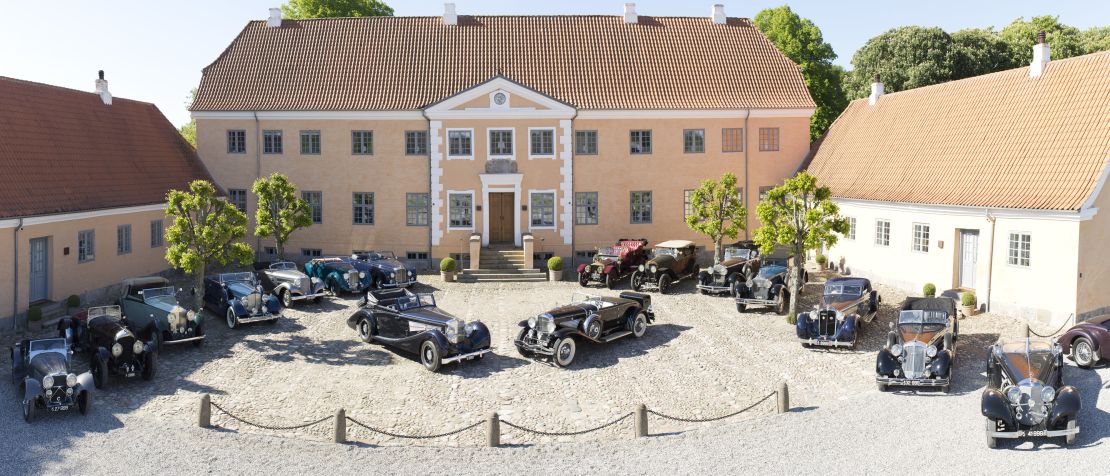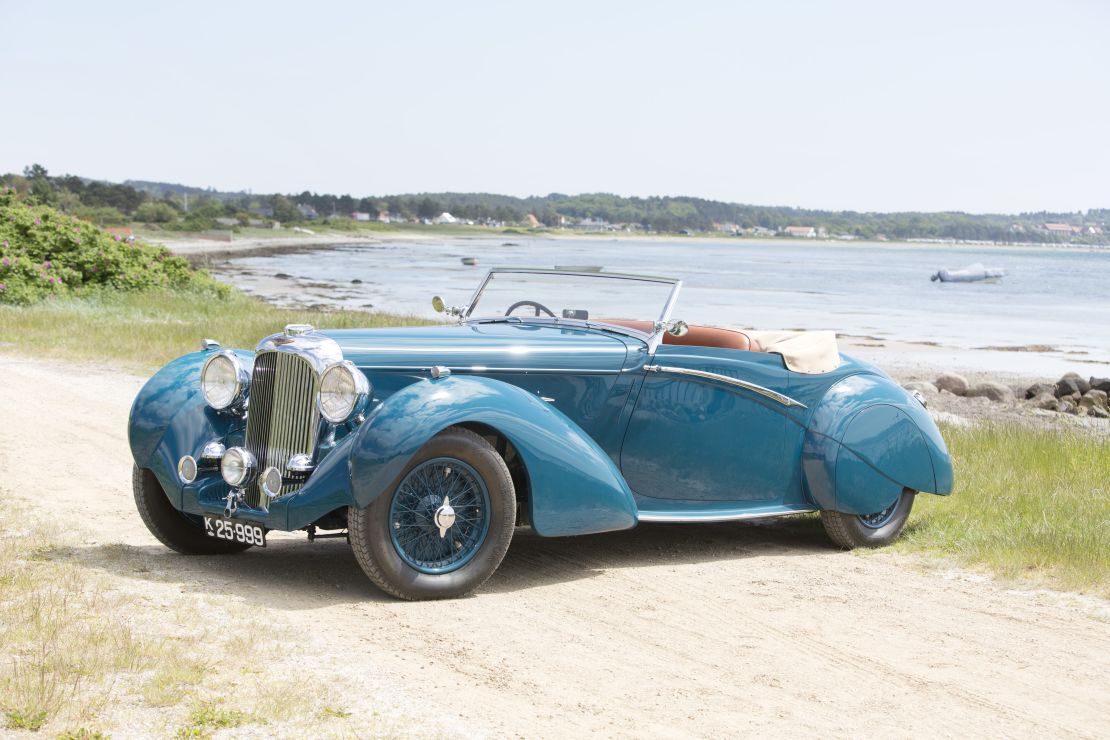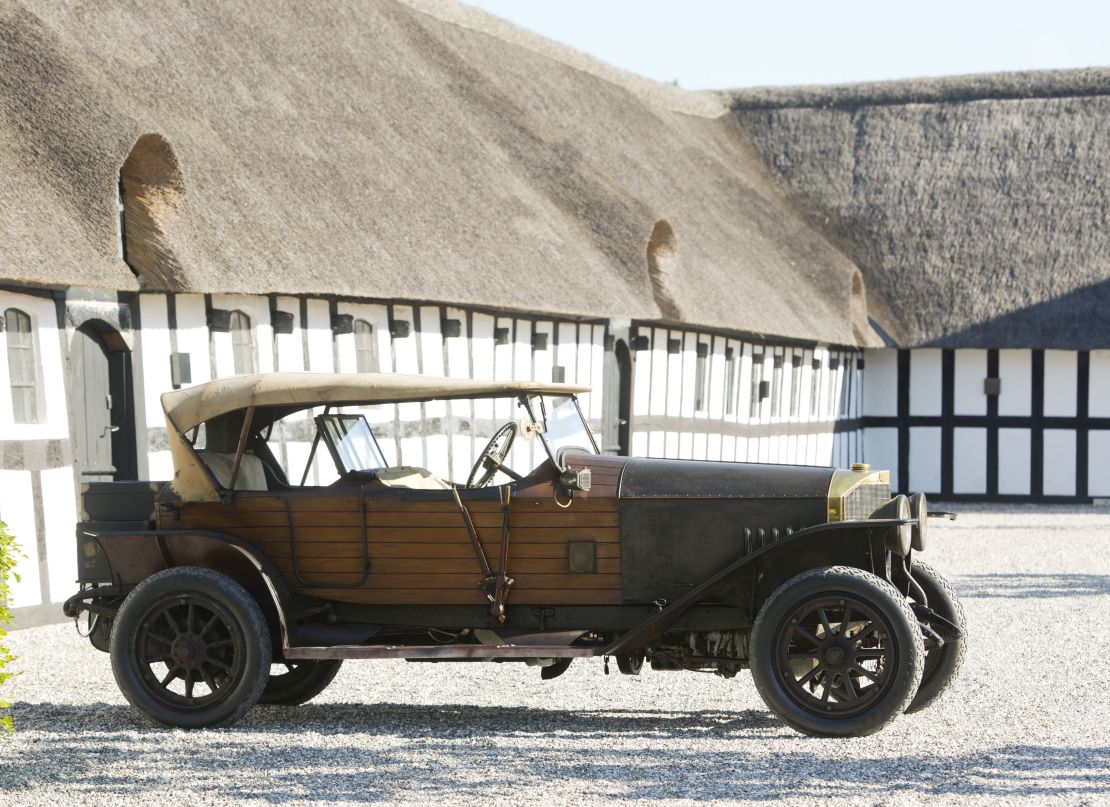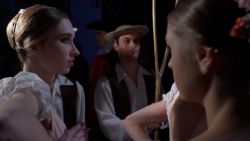Editor’s Note: Jared Zaugg is author of the newly released book on classic sports and racing cars, “Gentlemen, Start Your Engines!”
On Denmark’s eastern coast of Jutland near the historical town of Ebeltoft, with its cobbled lanes and colorful, timber-framed row houses, sits an estate larger than the size of Monaco.
Like most of this bucolic area that lies within Mols Bjerge National Park, large sloping fields of waist-high grass are interrupted by thick pockets of mature chestnut and fir forest.
A fresh breeze blows off the sea and with more than three-quarters of the day bathed in warm light, the feeling in this gently hilled country is one of calm and plenty. It’s here, at Lyngsbækgård Manor – the seat of the estate – where an important collection of motorcars is housed.
Regal paradise
Built in the 16th century by the Danish Royal Crown, Lyngsbækgård Manor became the summer home of the King of Denmark. Today – and for the past many years – it’s the full time residence of Henrik Frederiksen.

For one of Denmark’s wealthiest men, who has the means to live anywhere in the world, calling Lyngsbækgård home is a testament, not just to the beauty of the property, but to the surrounding area.
“This area is a paradise,” says Frederiksen with a smile. “It’s quiet, beautiful, lots of space. It’s all very special.”
Some time ago Frederiksen and his late wife Vivi hired a team of 35 workers, who toiled every day for three years to restore the Lyngsbækgård Manor and its buildings to their original splendor.
Today it’s a sight to behold. Not opulent or ostentatious but reflecting tasteful Scandinavian restraint that imparts a cheerful, regal appearance. The manor house is flanked on three sides by what is the largest thatched roof structure in Denmark.
These connected timber-framed buildings were originally the stables, granaries and workrooms of the estate and today accommodate Frederiksen’s magnificent collection of nearly 50 automobiles.
A passion shared
Collected piece by piece over the years by Mr. and Mrs. Frederiksen, the car collection is the result of what was very much a mutual passion. Consisting primarily of pre-World War II cars – with the majority hailing from Great Britain, America and Germany – the Frederiksen automobiles all have the distinction of being in running condition.

Not mere static displays, these incredible machines – ranging from a 1905 Woods Electric Motor Vehicle to a 1973 Rolls-Royce Phantom VI Convertible– adhere to their manufacturer’s original design: to run. It’s quite an impressive feat when one considers the antiquity, variety, uniqueness and sometimes temperamental nature of these old motorcars.
“We bought with our hearts, not with our brains,” says Frederiksen. “We looked for the very best examples and made no compromises.” As a result, many models represent some of the finest examples of their kind anywhere in the world, several of which have won top prizes at the world’s most prestigious events, like the Pebble Beach Concours d’Elegance in Carmel in California and the Concorso d’Eleganza Villa d’Este in Cernobbio, Italy.
The Golden Age of motoring
With marques such as Bentley, Cadillac, Duesenberg, Maybach, Mercedes-Benz, Pierce-Arrow and Rolls-Royce, the grandest names from the Golden Age of motoring are represented.
When asked why the focus of the collection is on cars made prior to the Second World War he says, “It was a time before mass production, at least for higher quality cars. You can see the hand of the craftsman, you can see the details, the beauty of each component. Each one is a work of art and each has a story to tell. It’s the polar opposite of cars today.”
Take for instance the Rolls-Royce 40/50 Silver Ghost, which was produced from 1907 to 1926. At a time when cars were either powerful or polished, nimble or sturdy, fast or comfortable, the Silver Ghost was all of that and more.
It was simply the best car money could buy and, as a result, became the preferred automobile of British and Indian royalty. In fact, luxury notwithstanding, the reliability of the Silver Ghost is attested to by one that resides within the corporate collection of the Rolls-Royce Motor Company and has over half a million miles on it (more than 800,000 km) and still runs strong.
Although Frederiksen has five Silver Ghosts, each of varying models, it is perhaps the 1914 Boat Tail model by Schebera Coachbuilders that attracts most attention. With its sculpted wood body reminiscent of a boat, and its sporty, convertible open top, this extremely rare and charismatic motorcar is the ultimate icon of the Silver Ghost legacy.

Although Frederiksen can’t decide on his favorite (“It depends on my mood,”) he does say that “Vivi’s favorite car was probably the Maybach,” pointing specifically to the 1937 Maybach SW38 Zeppelin Special Roadster since there are two German-made Maybachs in the collection. When asked why, he says, “Because it’s perfect.”
We take the Maybach out onto a country lane near the manor and find that this enormous car doesn’t feel or act half as heavy as it looks, owing to its monstrous and beautiful V-12 engine.
Not only that, but, incredibly, the Maybach uses an early form of paddle shift on the steering wheel – a technology typically associated with Ferrari from the 1990s. As we cruise along smoothly with the top down through the green Danish countryside, I’m astounded by how advanced this car was for its time and reminded of what Frederiksen said about why he loves these automobiles so much: “To be able to drive such a thing of beauty is a wonderful experience.”
While the Maybach is extremely impressive, as is the Duesenberg Model J, the Hispano-Suiza H6C, the Isotta-Fraschini 8A, the Lagonda LG6 Rapide, and on and on, it’s the 1914 Mercedes 28-95 Phaeton that strikes my attention most. What may seem relatively unremarkable among such an eye-watering assembly could be the most unique car of all for one simple reason: it’s completely original.
Unrestored and showing all the patina of a priceless antique, the wooden body, wooden wheel spokes, canvas covered top, brass fixtures, hammered metal light buckets, even the original Louis Vuitton leather trunk, appear in a time warp condition. And it runs, of course. “This came out of Uruguay,” says Frederiksen with a grin. “It’s very special, isn’t it?
Vivi passed away just this spring and now Frederiksen has decided to sell their beloved collection. Looking around, admiring the four dozen examples of functional artwork that have all been brought out into the courtyard for my visit, the question naturally arises, why?
“I’ve never sold a car before. But this was something Vivi and I did together,” say Frederiksen. “With her gone, well, it’s time to close this door and open a new one. It’s time for these cars to find new homes.”
Mr. Frederiksen has appointed Bonhams auction house to exclusively represent the collection at sale. Scheduled for Saturday 26 September, the auction will take place on site at Lyngsbækgård Manor.
See details on each of the 48 cars at bonhams.com


















